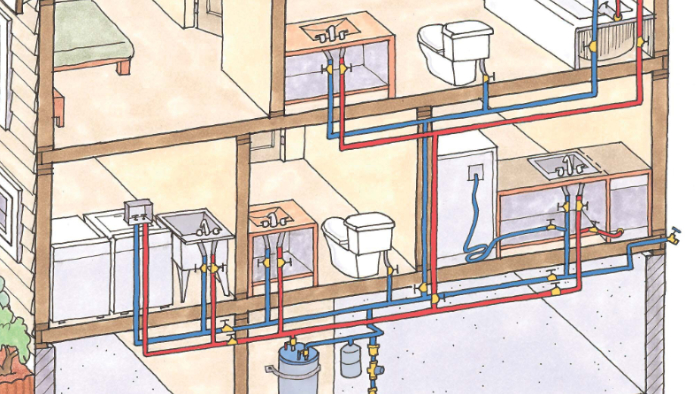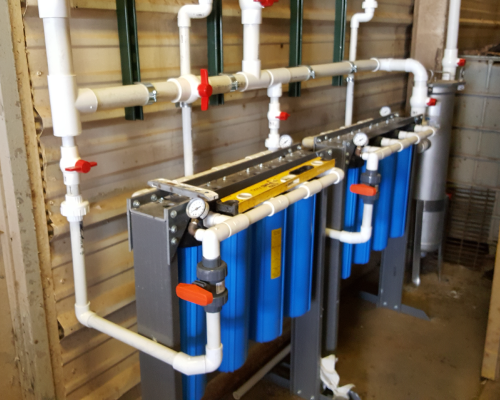Right here down the page you will discover additional extremely good material when it comes to Anatomy of a House: Understanding the Components.

Recognizing how your home's pipes system works is crucial for each property owner. From providing tidy water for drinking, food preparation, and bathing to securely eliminating wastewater, a well-kept plumbing system is vital for your family's health and wellness and convenience. In this comprehensive guide, we'll discover the intricate network that makes up your home's pipes and deal tips on maintenance, upgrades, and managing usual issues.
Intro
Your home's plumbing system is greater than just a network of pipes; it's a complicated system that ensures you have access to clean water and efficient wastewater removal. Knowing its components and how they work together can help you protect against pricey fixings and make certain whatever runs efficiently.
Basic Components of a Pipes System
Pipelines and Tubes
At the heart of your pipes system are the pipelines and tubing that carry water throughout your home. These can be made of various materials such as copper, PVC, or PEX, each with its benefits in regards to longevity and cost-effectiveness.
Fixtures: Sinks, Toilets, Showers, etc.
Fixtures like sinks, commodes, showers, and tubs are where water is made use of in your house. Comprehending exactly how these components attach to the pipes system aids in detecting troubles and intending upgrades.
Shutoffs and Shut-off Factors
Valves control the flow of water in your plumbing system. Shut-off valves are essential during emergency situations or when you require to make fixings, allowing you to isolate parts of the system without interrupting water circulation to the whole residence.
Water Supply System
Main Water Line
The main water line links your home to the local water system or an exclusive well. It's where water enters your home and is dispersed to numerous fixtures.
Water Meter and Pressure Regulator
The water meter procedures your water use, while a stress regulatory authority makes certain that water streams at a risk-free stress throughout your home's pipes system, stopping damages to pipelines and components.
Cold Water vs. Warm water Lines
Recognizing the difference between cold water lines, which supply water directly from the primary, and warm water lines, which lug warmed water from the water heater, assists in repairing and preparing for upgrades.
Drainage System
Drain Piping and Traps
Drain pipelines lug wastewater away from sinks, showers, and toilets to the drain or sewage-disposal tank. Traps prevent sewer gases from entering your home and likewise catch particles that can cause blockages.
Air flow Pipes
Ventilation pipelines permit air right into the drainage system, avoiding suction that could slow down water drainage and cause catches to empty. Appropriate air flow is crucial for maintaining the stability of your pipes system.
Relevance of Proper Drainage
Making sure correct water drainage avoids back-ups and water damages. Frequently cleaning up drains pipes and keeping traps can prevent costly repair services and prolong the life of your pipes system.
Water Furnace
Sorts Of Water Heaters
Hot water heater can be tankless or typical tank-style. Tankless heating units warmth water as needed, while containers save warmed water for instant usage.
Updating Your Pipes System
Factors for Updating
Updating to water-efficient components or replacing old pipes can enhance water quality, lower water bills, and boost the worth of your home.
Modern Pipes Technologies and Their Advantages
Check out innovations like clever leakage detectors, water-saving commodes, and energy-efficient hot water heater that can conserve cash and lower ecological effect.
Cost Considerations and ROI
Compute the ahead of time expenses versus long-term savings when considering plumbing upgrades. Many upgrades spend for themselves with decreased energy costs and less repair services.
Exactly How Water Heaters Link to the Pipes System
Comprehending how hot water heater connect to both the cold water supply and warm water circulation lines helps in detecting problems like not enough hot water or leakages.
Maintenance Tips for Water Heaters
Regularly flushing your hot water heater to remove sediment, examining the temperature level settings, and checking for leakages can extend its life expectancy and improve energy effectiveness.
Usual Plumbing Issues
Leakages and Their Reasons
Leaks can occur because of aging pipelines, loosened fittings, or high water pressure. Dealing with leaks promptly prevents water damages and mold and mildew development.
Blockages and Obstructions
Blockages in drains pipes and bathrooms are frequently brought on by flushing non-flushable items or a build-up of grease and hair. Using drain displays and bearing in mind what goes down your drains pipes can avoid clogs.
Indicators of Pipes Issues to Watch For
Low water stress, slow drains, foul odors, or abnormally high water expenses are indications of potential pipes issues that need to be attended to immediately.
Plumbing Upkeep Tips
Routine Evaluations and Checks
Schedule annual pipes assessments to catch problems early. Search for signs of leakages, rust, or mineral buildup in taps and showerheads.
DIY Upkeep Tasks
Easy jobs like cleansing faucet aerators, checking for commode leakages utilizing color tablet computers, or insulating subjected pipes in cool environments can stop major plumbing concerns.
When to Call an Expert Plumbing Technician
Know when a plumbing issue calls for expert know-how. Attempting complex fixings without proper expertise can result in more damages and greater fixing expenses.
Tips for Decreasing Water Usage
Straightforward routines like repairing leaks without delay, taking shorter showers, and running complete tons of laundry and recipes can save water and reduced your energy bills.
Eco-Friendly Plumbing Options
Consider lasting plumbing materials like bamboo for floor covering, which is durable and green, or recycled glass for kitchen counters.
Emergency Preparedness
Actions to Take Throughout a Plumbing Emergency situation
Know where your shut-off shutoffs are located and how to switch off the water in case of a ruptured pipe or significant leakage.
Importance of Having Emergency Calls Useful
Maintain get in touch with details for local plumbing professionals or emergency services conveniently available for fast reaction throughout a plumbing dilemma.
Ecological Impact and Preservation
Water-Saving Fixtures and Devices
Installing low-flow faucets, showerheads, and bathrooms can dramatically lower water usage without sacrificing performance.
Do It Yourself Emergency Situation Fixes (When Applicable).
Momentary solutions like making use of duct tape to patch a leaking pipeline or placing a container under a leaking tap can lessen damage up until a professional plumbing technician gets here.
Final thought.
Understanding the composition of your home's plumbing system encourages you to preserve it efficiently, conserving money and time on repairs. By complying with regular upkeep regimens and remaining informed concerning modern pipes technologies, you can guarantee your plumbing system runs effectively for years ahead.
HOW YOUR PLUMBING SYSTEM WORKS
Which Pipes Do What?
Blue lines = fresh water supply entering the building Red lines = hot water supply entering the building Grey lines = pipes carrying waste away from the building and venting pipes carrying gases away from the building (through the roof) YOUR MAIN PLUMBING SYSTEMS
There are two main plumbing systems that support your home s basic plumbing needs one that brings clean water into your home, and one that sends dirty water away from your home. Connected to the toilet, bath, shower, and other faucets in your home, these two systems keep your water flowing in the right directions.
ACCESSING FRESH WATER
Fresh and clean water is brought into your home through the main water supply line . Filtered through one pipe, this water is pressured to flow into the various fixtures in your home at any given time.
This water can be sourced from a well located on your property, a pond or river (mostly cottages), or, as in most cases, from the city s municipal water treatment centre. However, it is important to note that water that is untreated, such as the water siphoned from ponds or rivers, may not be safe to drink. Personal water supplies always need to be treated for hardness and contaminants before consumed.
MUNICIPAL WATER SUPPLIES
Improve taste and odour Remove sediment Eliminate hardness Reduce chlorine COLD WATER SUPPLY VS. HOT WATER SUPPLY
Cold water flows into your home or building through the service line, which then distributes hot or cold water to your fixtures. This line is most commonly run through a central column that runs floor to floor. Hot water runs in short and straight pipes as the longer the pipeline, the more heat that will be lost in the transfer. Having shorter pipes also allows residents to access hot water more quickly.
WASTE WATER SYSTEM
Your wastewater system is divided into two parts pipes that send wastewater away from your home and venting pipes that send sewer gas away from your home. Sewage water travels through pipes that flush the water and waste towards local sewers that are operated and managed by your city or town. Most sewer systems rely on gravity to move the wastewater to where it needs to go.
The further away from your toilet or sink, the larger wastewater pipes become. This allows for waste to be disposed of from various parts of your home or business at once without pipe blockages. The angle and flow of these pipes are also essential for keeping your waste pipes clear of build up.
https://harrisplumbing.ca/how-your-home-plumbing-system-works/

I'm certainly very enthusiastic about Understanding Your Home's Plumbing Anatomy and I hope you enjoyed the new page. Sharing is good. You just don't know, you might be helping someone out. I praise you for your time. Revisit us soon.
Customer Reviews